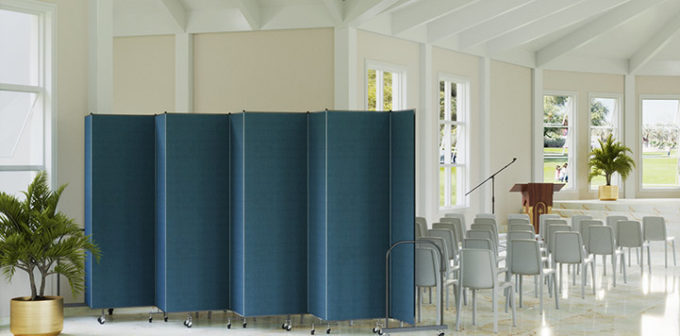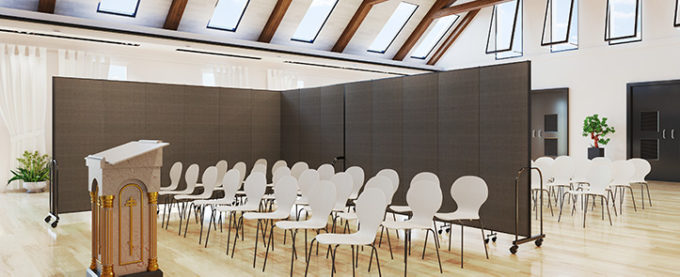The Small Church: How to Create a Healthy Environment
Market: Religious
 What Are Some Characteristics of a Healthy Church?
What Are Some Characteristics of a Healthy Church?
An indicator of a church’s success relies on its general healthiness. So what is a healthy church? According to chchurches.org, a healthy church is a community with a shared vision, trusted leaders, and a thriving ministry. In this environment, everyone has the same goals regarding God’s work.
This vision aligns all the community members spiritually, mentally/emotionally, physically, and financially. The ministry is thriving, and there is a sense of purpose among church members. Alongside these other traits, the leadership of a healthy church is secure and also trusted. For your church, the ultimate goal is to be healthy and flourishing.
Though this type of robust community occurs in both big and small churches, the bigger ones seem to take the limelight if only for their sheer size. However, if you run a small church, here are some ways it’s already healthy, and how to make it even more prosperous.
First, What is a Small Church vs. a Megachurch?

Photo source: www.freepik.com/ – whatwolf
Church size typically does not refer to the size of the building, but instead, the average weekly attendance of congregants. A small church typically implies an average of 50 people or less at the services. In contrast, a megachurch usually holds 2000 plus members every week.
How many small churches are there? As of 2010, small churches made up about 59% of the US Christian parishes. Needless to say, these establishments are essential to the slight majority of devout Christians in the United States.
While some are smaller due to town size, others simply have limited space. Regardless of the scale of the church, outward appearances can be deceiving in how effective they are at spreading God’s mission.
Benefits of a Small Church
-
Individual Time With the Pastor
In a big church with thousands of worshippers, personalized time with your pastor can be next to impossible. Many parishioners not only feel immense joy from direct communication with their pastor but also thrive from it. A pastor is a spiritual leader for many, and acts as a guide for community members.

Photo source: www.freepik.com – rawpixel.com
Although medium-sized churches and megachurches will typically have ministry leaders who play similar roles as the pastor, some people prefer the leadership from a pastor instead. To some, they are more of a direct guide for God’s plan.
-
Sense of Community
Megachurches have their benefits too, but it’s easy to feel lost in them like a little fish in a big pond. Even though good-natured people may surround you, it’s a challenge to find where you belong in such a vast sea of others. While some worshippers may like that sort of church where they can keep to themselves, many enjoy the sense of community from intimate gatherings instead.
Not to mention, large crowds are common anxiety-producers. This concept is especially true in the COVID era. Standing in a large group in the age of quarantine and social distancing can potentially cause more harm than good, even in a church setting. For a tight community and also the relative safety from the Coronavirus, a small, healthy church is the way to go.
Creating Growth
Even though small churches have their advantages, it is still the goal of any congregation to gain and maintain their numbers. Since there are a natural ebb and flow of service attendees due to people moving and seasonal lulls, this goal is especially important. To remain in a healthy atmosphere, here some ways to stimulate growth and retention in a small church.
-
Host Community Gatherings
An effective way to spread the word about your church is to host events for the community. Many churches are the home of blood drives or food drives. These occasions make people feel good to donate both their time and resources and, if promoted properly, can attract a decent-sized crowd of new faces and returning churchgoers combined.
-
Efficiently Utilize Small Space
For ministries and other small gatherings, it’s important to sometimes physically compartmentalize the space. Most churches have extra rooms for services such as Sunday School or other fellowships but sometimes need to split them up for multiple events.

For instance, if two Sunday School classes are occurring at once but there is only one multipurpose room, the space should be broken up. Typically for this type of situation, portable walls are an excellent tool. Screenflex offers sturdy and moveable room dividers that are perfect for any small church. Freestanding and adaptable, these temporary walls can adjust any floor space. Maximizing your facility can help please your members and ultimately retain them as well.
-
Create and Share Videos
Social media is one of the biggest platforms for marketing these days. If you would like to promote your church to potential congregants, video record your service, and put it on various socials. During this pandemic especially, this tactic grew exponentially since most people weren’t able to go to their house of worship in person.
Live streaming your services is not only beneficial during a pandemic, but all the time as well. This tactic is a quick way to spread your message to multiple people at once. It can also give some people who are unsure if your church is the right fit, a taste of what to expect without feeling overwhelmed in person. This is a great way to create engagement with your church members.